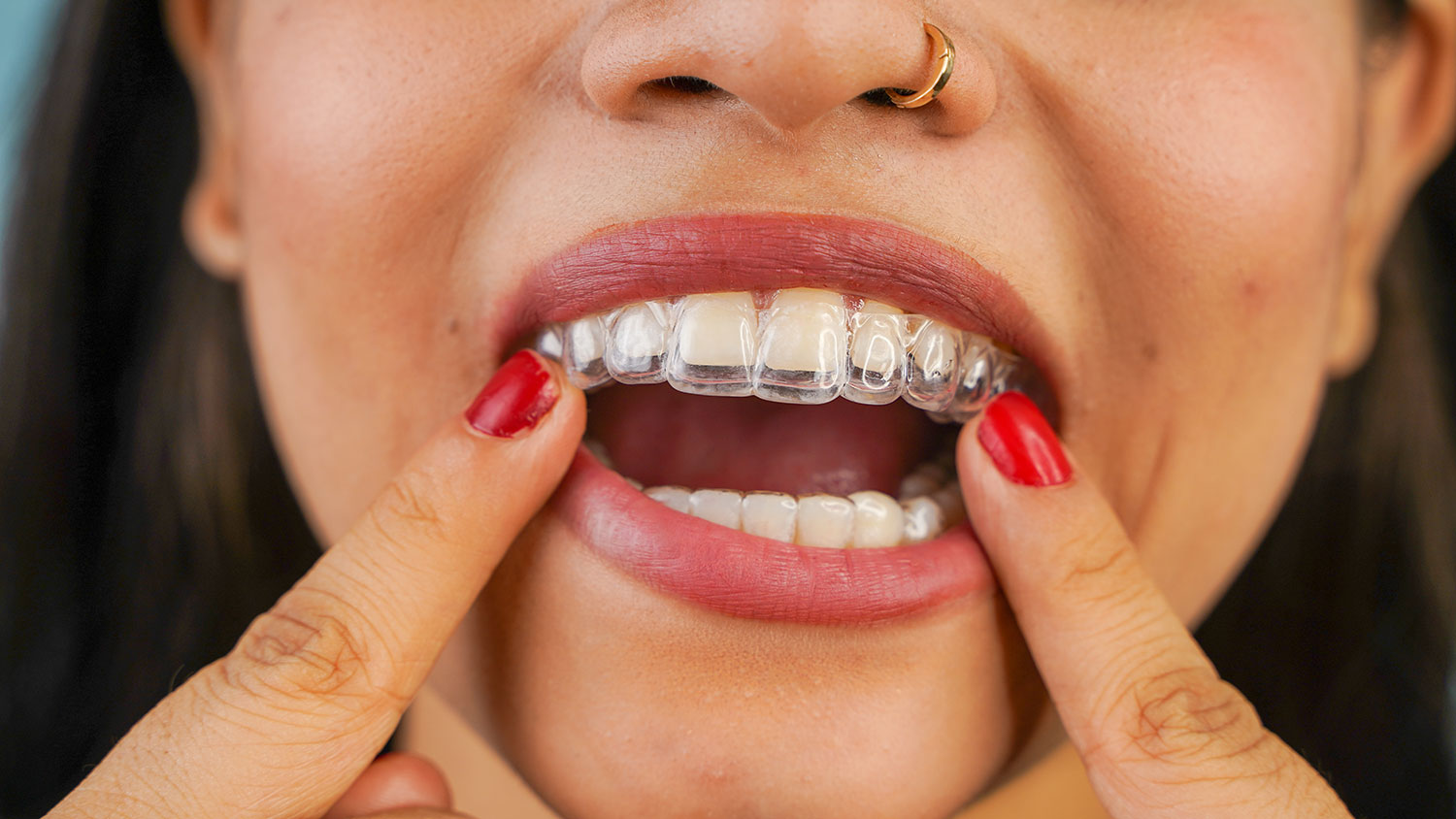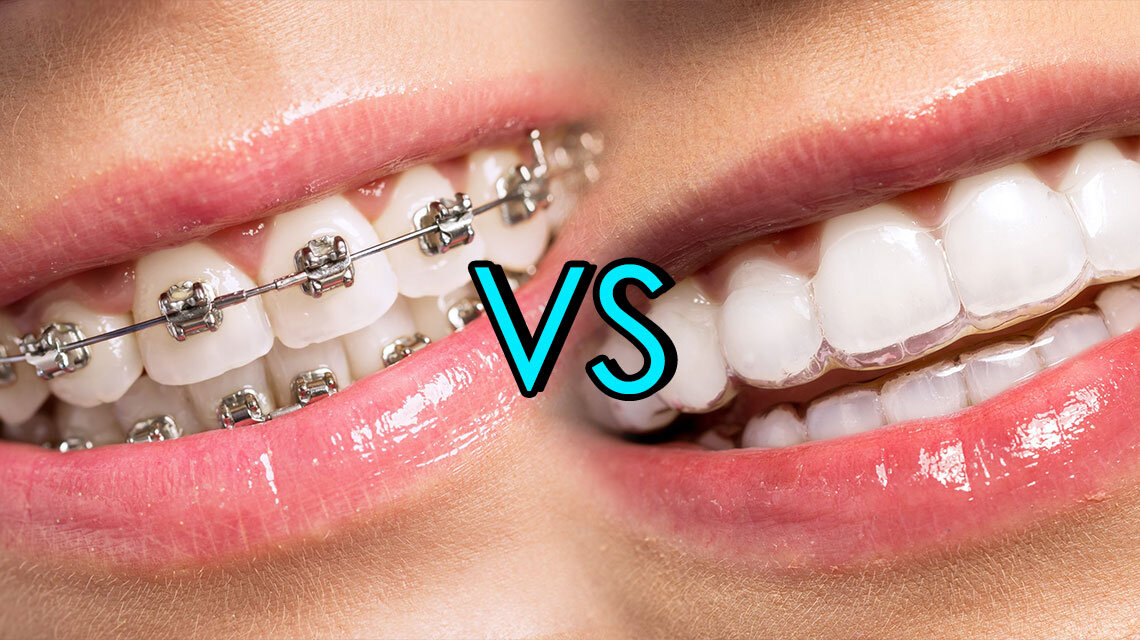The Cost of Invisalign: Understanding the Investment in Your Smile
The Cost of Invisalign: Understanding the Investment in Your Smile
Blog Article
Invisalign vs. Traditional Dental braces: Which Choice Is Right for You?
When thinking about orthodontic treatment, the selection between Invisalign and traditional dental braces presents several vital aspects that merit careful assessment. Invisalign offers a very discreet option with removable aligners, while typical dental braces offer an extra noticeable yet effective remedy for severe imbalance. Each option includes distinct benefits and disadvantages connected to visual appeals, convenience, therapy duration, and price. Understanding these nuances is important for making an informed decision that aligns with your individual choices and way of life. The concern remains: which choice will best fulfill your orthodontic demands and assumptions?
Introduction of Therapy Choices

In comparison, traditional braces include steel brackets and wires that are bound to the teeth. This approach applies constant stress over time to accomplish placement. While reliable for complex orthodontic issues, standard dental braces call for regular brows through for modifications and can present challenges in preserving dental hygiene due to the trouble of cleansing around cords and brackets.
Both choices have their merits, and the option typically rests on particular oral problems, way of life choices, and person compliance. Inevitably, consulting an orthodontic specialist is vital for figuring out the most appropriate therapy plan customized to private needs. Recognizing the nuances of each alternative can substantially affect the general success of orthodontic therapy.
Visual Factors To Consider
A substantial aspect influencing the selection in between Invisalign and traditional braces is the visual appeal each treatment supplies. Invisalign aligners are crafted from clear plastic, making them virtually unnoticeable when put on. This discreet appearance is particularly interesting grownups and teenagers that might feel uncomfortable concerning their orthodontic treatment. The capability to maintain a natural smile throughout the placement procedure can considerably boost the person's confidence in social and professional setups.
On the other hand, standard dental braces include metal brackets and cords, which can be much more recognizable. While improvements in orthodontic technology have actually resulted in the growth of smaller brackets and tinted elastics, conventional dental braces still maintain an even more obvious profile. For some individuals, the exposure of braces might prevent them from seeking needed treatment.
Inevitably, the option in between Invisalign and conventional braces might depend upon personal choices regarding aesthetic appeals. Patients that focus on discernment often lean toward Invisalign, while those that are less concerned concerning visibility might decide for traditional dental braces. Comprehending the aesthetic effects of each alternative is vital for making an informed choice that straightens with one's lifestyle and preferences.
Convenience and Convenience

In terms of convenience, Invisalign aligners are removable, making it possible for clients to appreciate their favored foods without restriction and preserve optimum dental health. Brushing and flossing are streamlined, as the aligners can be secured during these regimens, whereas standard braces call for mindful navigating around brackets and cables.
Furthermore, Invisalign's dynamic system allows for fewer orthodontic gos to. Clients normally get multiple sets of aligners simultaneously, which can improve the therapy process and reduce time invested in the orthodontist's chair. In contrast, typical dental braces demand routine changes, making them much less practical for those with active schedules. Invisalign. In general, the convenience and comfort of Invisalign make it an enticing selection for many people seeking orthodontic therapy.
Treatment Period and Effectiveness
While both Invisalign and traditional braces work in dealing with oral imbalances, the period of treatment can vary dramatically between the 2 choices. Generally, Invisalign therapy can take anywhere from 12 to 18 months, depending upon the intricacy of the situation. The clear aligners work by progressively changing teeth into their preferred positions, and routine follow-ups with an orthodontist help ensure progression stays on track.
In comparison, traditional dental braces often require a longer dedication, typically varying from 18 months to 3 years. This is because of their set nature and using brackets and cables, which can be a lot more effective for extreme misalignments and complicated situations (Invisalign). The therapy efficiency of traditional dental braces is well-documented, as they permit accurate modifications and better control over tooth activity
Inevitably, the choice between Invisalign and standard braces might rest on both the awaited treatment period and the certain dental concerns available. Consulting with an orthodontist is critical, as they can supply tailored referrals based upon specific demands, ensuring the chosen technique aligns with wanted durations and outcomes.
Cost Contrast and Insurance Coverage Options
Expense plays a considerable function in the decision-making procedure for individuals taking into consideration orthodontic therapy, whether opting for Invisalign or conventional dental braces. Usually, the expense of Invisalign ranges from $3,000 to $8,000, while traditional dental braces commonly set you back in between $2,000 and $6,000. Elements affecting these prices include the complexity of the instance, the duration of therapy, and geographical location.
Many oral insurance policy strategies give partial insurance coverage for orthodontic therapies, however the specifics can vary widely. Typically, standard dental braces may be a lot more often covered by insurance strategies compared to Invisalign, which some insurance companies site link categorize as an aesthetic procedure.
Furthermore, several orthodontic techniques supply versatile layaway plan, making both treatment alternatives more obtainable. Individuals must ask about possible funding options and discounts for upfront settlements. Assessing the total cost, including insurance benefits and layaway plan, is crucial for making an educated choice that straightens with both visual preferences and budget plan factors to consider.

Conclusion
In recap, the choice in between Invisalign and traditional braces depends upon several variables, consisting of aesthetic preferences, comfort, treatment period, and expense. Invisalign uses a very discreet, detachable choice that facilitates dental health and dietary flexibility, while standard braces may be better for intricate dental issues and usually come at a lower rate factor. Ultimately, examination with an orthodontist is vital to evaluate individual circumstances and identify the most appropriate therapy alternative for accomplishing optimal dental placement.
When thinking about orthodontic therapy, the option in between Invisalign and conventional braces Invisalign offers a number of crucial factors that warrant careful evaluation.Contrasting Invisalign and conventional dental braces reveals distinct treatment alternatives for orthodontic improvement.While both Invisalign and standard dental braces are effective in fixing dental misalignments, the duration of therapy can differ dramatically in between the 2 alternatives.Price plays a considerable function in the decision-making process for people thinking about orthodontic therapy, whether deciding for Invisalign or standard braces.In summary, the selection between Invisalign and standard braces pivots on multiple factors, consisting of visual preferences, comfort, treatment duration, and expense.
Report this page